Stretches All physical therapists Wish You Would Do
Movement truly is therapeutic, and stretching is one of the most powerful—and most overlooked—parts of your daily wellness routine. In addition to enhancing flexibility, stretching can improve circulation, aid in strength building, enhance range of motion, and help reduce chronic pain [1, 2]. Stretching can also be deeply relaxing, helping your body and mind unwind after long hours of sitting or stress [1, 3].
Common Misconceptions About Physical therapy
Physical therapy is often associated with athletic injuries and post-operative care, but it’s a vital component of healthcare that supports a much larger population. Physical therapists work with people of all ages and activity levels, from those looking to return to high-impact sports to individuals simply trying to lift their grandchildren or walk without assistance. However, a limited understanding of the purpose and benefits of physical therapy has led to many misconceptions about this...
Why a Normal Sleeping Routine Is Important
Getting consistent amounts of sleep regularly influences emotional, physical, and mental well-being. Most adults’ busy schedules cause interrupted sleep, which can lead to cognitive issues, poor immunity, mood fluctuations, and other health problems. Maintaining a healthy sleep pattern should not be neglected—read on to learn more about the importance of a good night’s sleep.
Understanding the Difference Between a Tendon and a Ligament
Tendons and ligaments are robust connective tissues that support the musculoskeletal structure and allow proper body movements. Both tendons and ligaments are made up mostly of the structural protein called collagen and a small amount of elastin. They also contain water and essential proteins that help maintain connective tissue integrity, provide bone and muscle lubrication, and ensure proper anatomical spacing. However, these two forms of connective tissue are found in different locations and ...

Recognize the Signs and Symptoms of a Stroke
According to the World Health Organization, stroke is the third leading cause of death worldwide and a major cause of disability. There are two main categories of a stroke: ischemic and hemorrhagic. An ischemic stroke occurs when an artery that supplies blood to the brain becomes blocked. A hemorrhagic stroke occurs when an artery in the brain bursts and bleeds into or around the surrounding tissue.
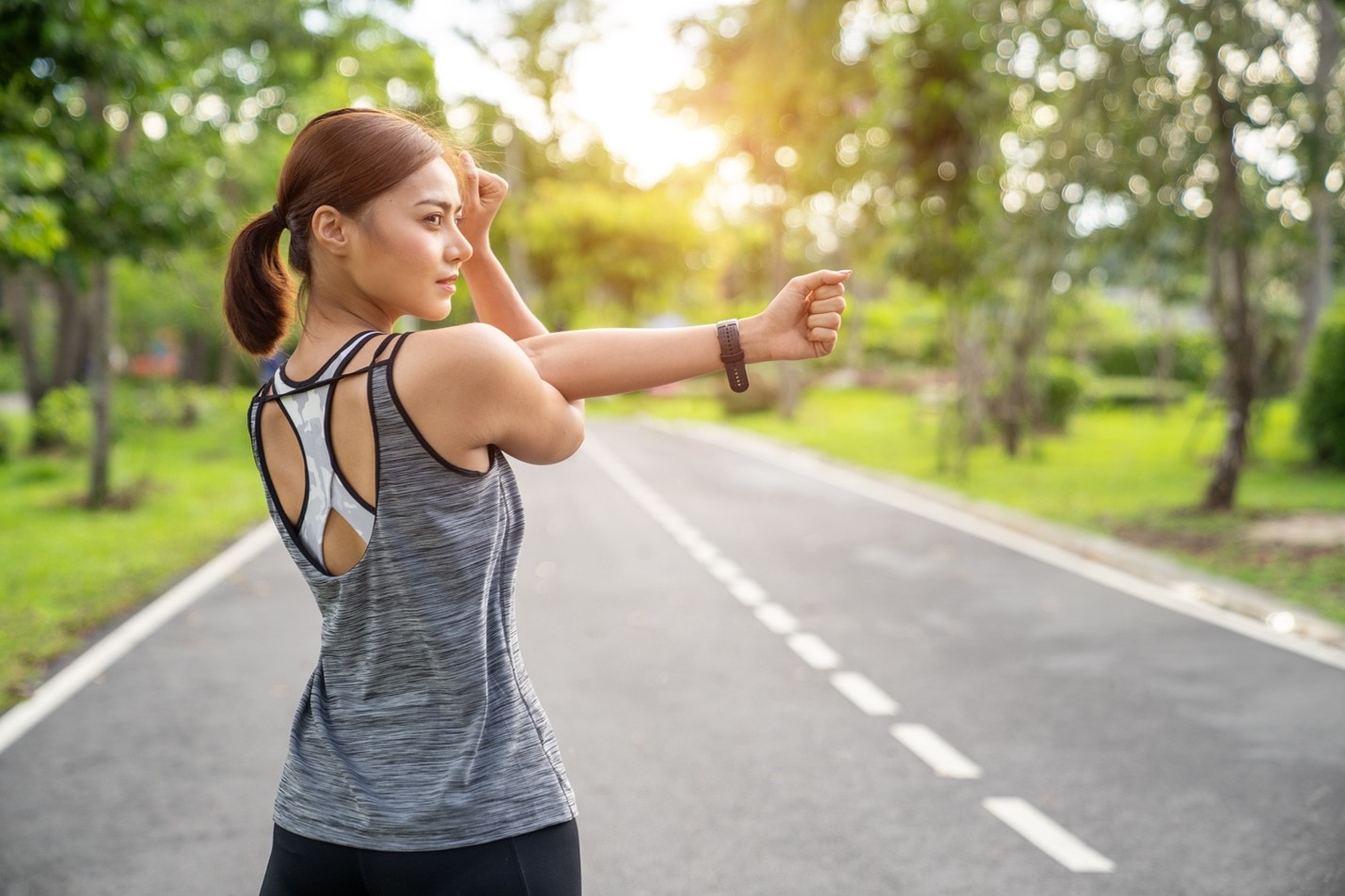
Importance of Stretching After an Activity and Maintaining a Stretching Program
Stretching is an often-overlooked component of a fitness routine, but it plays a crucial role in maintaining your overall health and physical performance. Incorporating stretching into your post-exercise routine and maintaining a regular stretching program provides you with several benefits, including improved flexibility, reduced muscle soreness, and enhanced recovery [1].


How Much Vitamin D and Calcium Do I Need for Strong Bones?
Your diet can directly impact your overall health and well-being, including the strength of your bones. The foods you eat contain vitamins, minerals, and nutrients that are essential for keeping you healthy. In particular, calcium and vitamin D are vital for keeping your bones healthy and strong [1-4]. The lumbar spine is one of the greatest areas affected by not enough calcium and vitamin D causing the vertebrae to progressively collapse and lose height over time as we age into senior years. De...

Maximum Fitness with Small Changes
Low levels of physical activity and poor dietary habits are associated with obesity and an increased risk of developing many chronic health conditions, including diabetes, heart disease, and some types of cancer [1]. Research has shown that making small changes to your physical activity and nutrition can have a significant impact on your overall health and well-being [1].
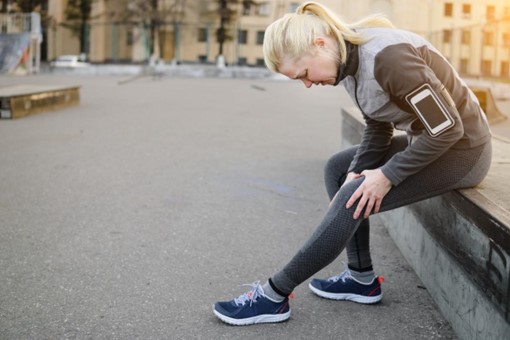
Running Injury Prevention and Treatment
Millions of people around the world run to experience cardiovascular, musculoskeletal, and psychological health benefits. However, the risks of running are high, with about 40% of runners suffering a running-related injury (RRI) each year. Overuse injuries of the knee, shin, calf, and foot seem to be the most common RRIs. Running injuries not only lead to diminished pleasure in the activity but may also lead to temporary or permanent discontinuation of running. Whether you’re a casual or a...

Benefits of Group Workouts
Leading a sedentary lifestyle is a major risk factor for chronic diseases, including cancer, cardiovascular disease, and diabetes. Estimates suggest that approximately 3.2 million deaths each year are attributable to insufficient physical activity levels. Therefore, the importance of physical activity cannot be overstated. Recent research has focused on the impact of group workouts, such as yoga, Zumba, Pilates, spinning, and running clubs, among others, on various health outcomes, which we&rsqu...

Which Supplements Do I Need for Strong Bones?
Healthy bones play an important role in your overall health by providing structure to your body, protecting your organs, supporting your muscles, and storing calcium. While it’s crucial to build strong bones during childhood and adolescence, it’s equally important to maintain healthy bones during your adult life. Healthy bones help to protect against osteoporosis, fragile bones, and bone fractures, which lead to morbidity, mortality, and decreased quality of life. Eating a balanced d...
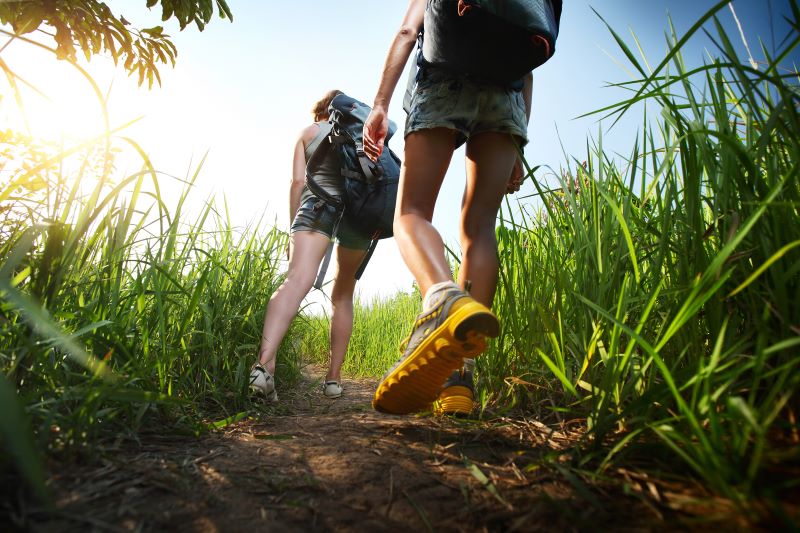
Hiking and Proper Footwear
Hiking is a great way to stay active while enjoying the beauty of nature. Like any type of physical activity, you need to be aware of the possibility of injury. Selecting proper footwear is an important part of ensuring you have a fun and injury-free hike. Your physical therapist can help you find the right shoes to support your feet, prevent injuries, and optimize your performance on the trail.

Will I Lose Strength and Muscle Mass as I Get Older?
As you age, your body undergoes a series of physiological changes. Loss of strength and muscle mass (sarcopenia) are natural consequences of aging. These changes typically occur gradually and impact your functional abilities and overall quality of life. Maintaining optimal muscle strength and mass is crucial for maintaining your independence and preventing age-related health complications, such as fall-related injuries.
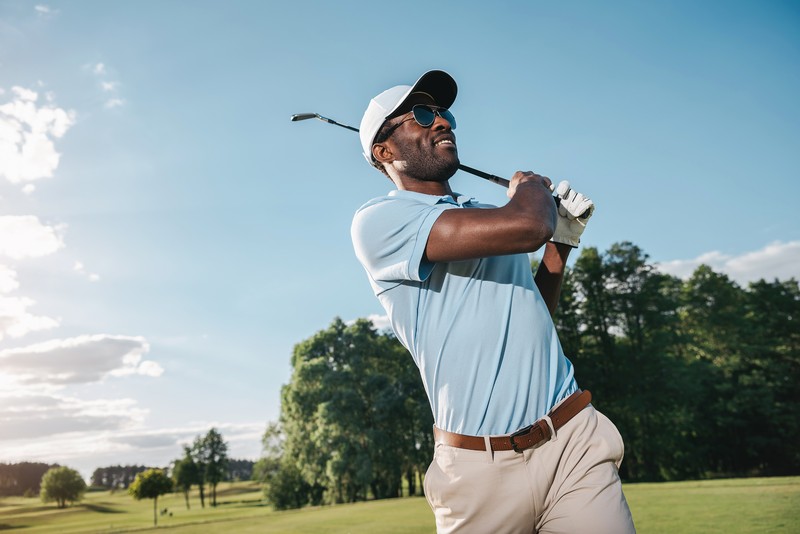
Buying the Correct Golf Clubs to Prevent Injuries
Golf is a common sport with approximately 55 million regular players worldwide. Not only is golf pleasurable to play, but it also provides both mental and physical health benefits.
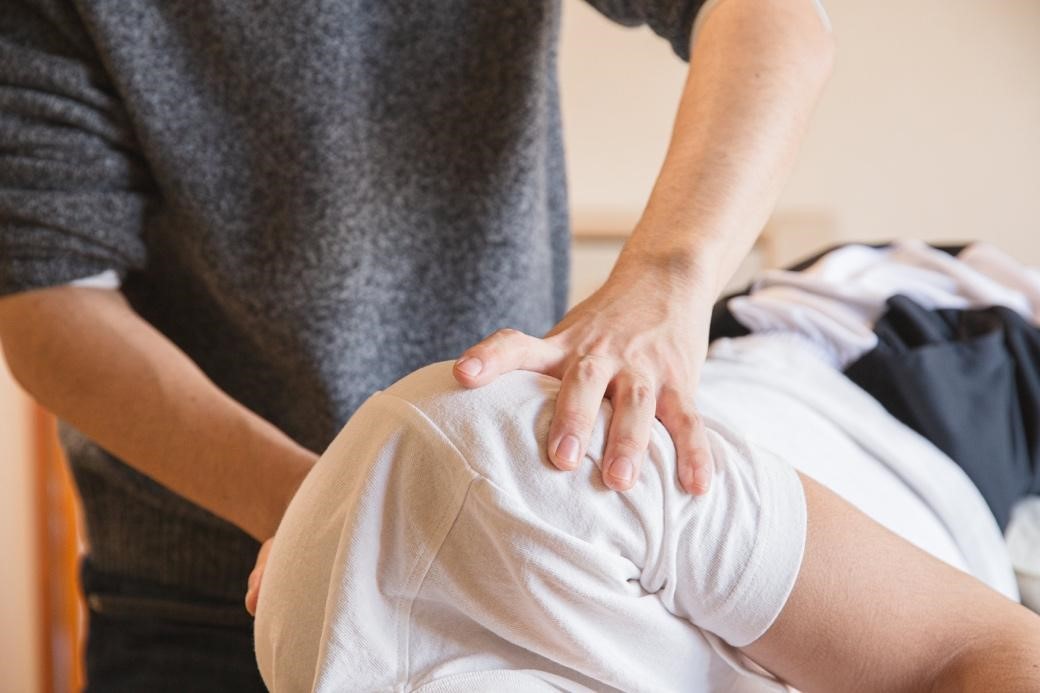
Physical therapy for Shoulder Dislocations
The shoulder joint can dislocate, due to the design of the joint that allows for significant flexibility at the expense of stability. Shoulder dislocations are extremely painful and have an impact on activities of daily living and participation in sports. Optimal management of a shoulder dislocation helps to restore function of the shoulder joint, prevent complications, and prevent recurrent dislocations.
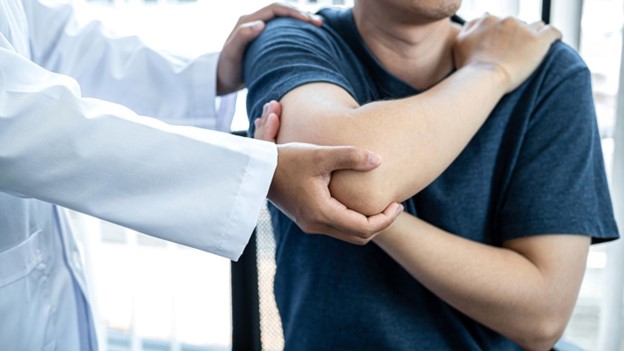
Physical therapy for Elbow Pain
Epicondylitis is a common cause of elbow pain in athletes and the general population. It can occur at both the medial (inside) and lateral (outside) epicondyle of the elbow. Medial epicondylitis, also known as “golfer’s elbow”, commonly occurs among golfers and other athletes who repetitively stress the tendons on the inside of the elbow. Lateral epicondylitis, also known as “tennis elbow”, commonly occurs among tennis players and other athletes who repetitively str...
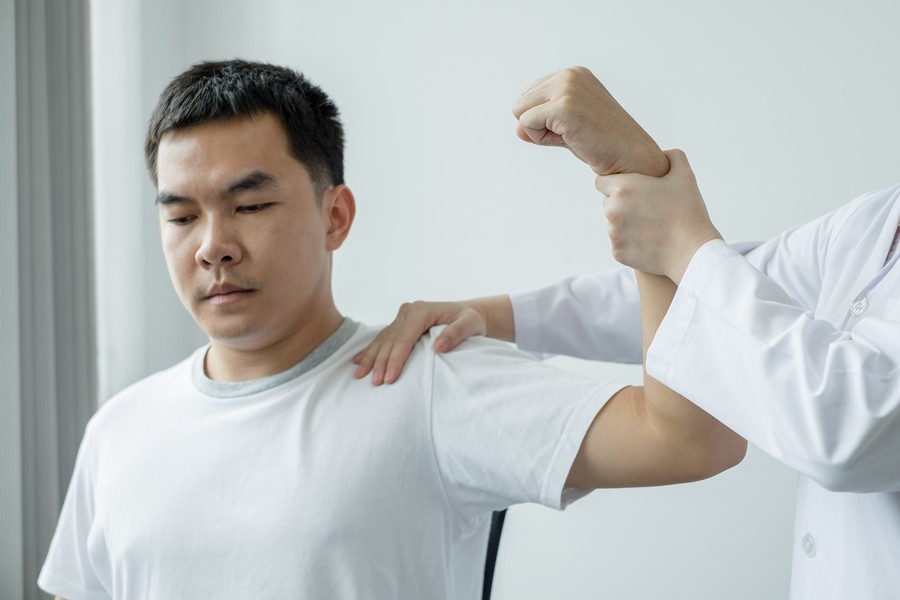
Physical therapy for Rotator Cuff Tears
Shoulder pain is a common complaint in the primary care setting, with studies reporting that it’s the third most common musculoskeletal complaint. Shoulder pain accounts for about 1-2.4% of adult visits to primary care providers each year, and approximately 65% of these visits are due to rotator cuff issues, including tears and tendinopathy.

Understanding Leg Length Discrepancy
Leg Length Discrepancy (LLD) is a common orthopedic condition in both kids and adults in which one leg is slightly longer than the other. LLD affects up to 90% of the general population and is usually mild, causing no noticeable symptoms. However, a significant LLD can cause issues such as pain, gait abnormality, spinal deformity, and joint degeneration. In this article, we’ll discuss the types and symptoms of LLD, as well as diagnosis and treatment options for LLD.
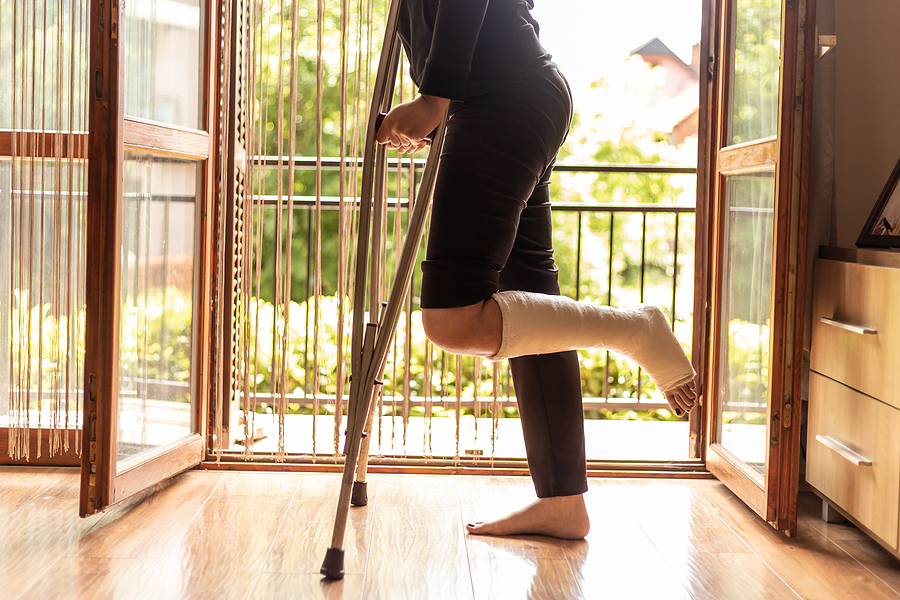
Bone Healing After Fracture and Surgery
Bone fractures are a common injury that can affect people of all ages and backgrounds. Accidents, falls, sports, and diseases that cause bone weakening can all cause bone fractures. The symptoms of bone fractures vary and may include pain, swelling, bruising, and loss of function of the injured area. Different treatments are available depending on the type and severity of the fracture. While some fractures may heal with immobilization and rest, others require surgery to put the bones back into a...

Understanding Trigger Finger
Trigger finger, also known as tenosynovitis or stenosing tenovaginitis, is a hand disorder that affects the tendons that allow the thumb and fingers to flex. This condition is characterized by the sudden release or locking of one finger during extension (extending) or flexion (bending) [Ferrara]. Additional symptoms include pain, stiffness, and reduced mobility in the thumb and fingers.
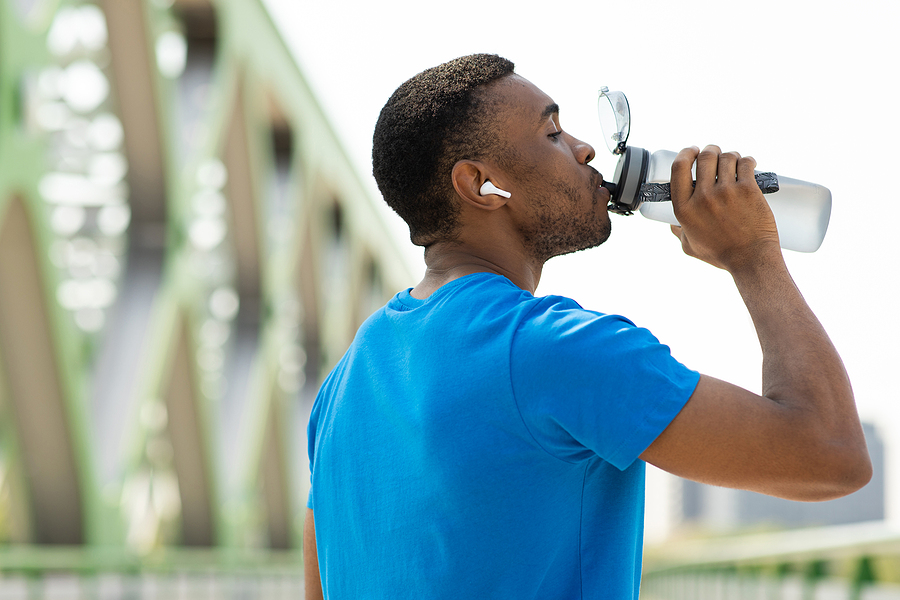
Enhance Mental Performance Through Regular Exercise
Have you ever wondered whether exercise could do more than just help you stay in shape orimprove your physical health? Research shows that exercising for about 20 minutes a day can help boost mental performance.

Osteoporosis vs Osteopenia
Preserving the health and strength of bones as individuals age is an important issue that is not overlooked in the medical community. However, statistics show that osteoporosis and osteopenia are major health problems for over 50 million women and men aged 50 and over in the United States (US). Both conditions are characterized by low bone density, or low bone mass, but osteoporosis occurs due to the progression of osteopenia.
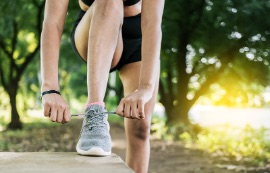
Choosing the right footwear for your activities
According to research, many people, including adults and children, wear the wrong type of footwear. In particular, children with certain neurodevelopmental disorders, people with diabetes, and older individuals are more likely to wear shoes that are too tight.

Selecting the right tennis racquet can help prevent elbow injury
Tennis elbow is an overuse injury caused by microscopic tears of the tendons that are connected to forearm muscles in the elbow joint. This type of injury develops due to repetitive movements, including repeatedly swinging a tennis racquet. Performing stretches, strength training, and forearm exercises can help reduce the risk of tennis elbow. Taking frequent breaks while playing sports such as tennis, or icing a sore joint, can also help ease minor inflammation before the tissue damage progress...

CrossFit Style Strength and Conditioning
CrossFit is a fast-growing form of high-intensity functional training.
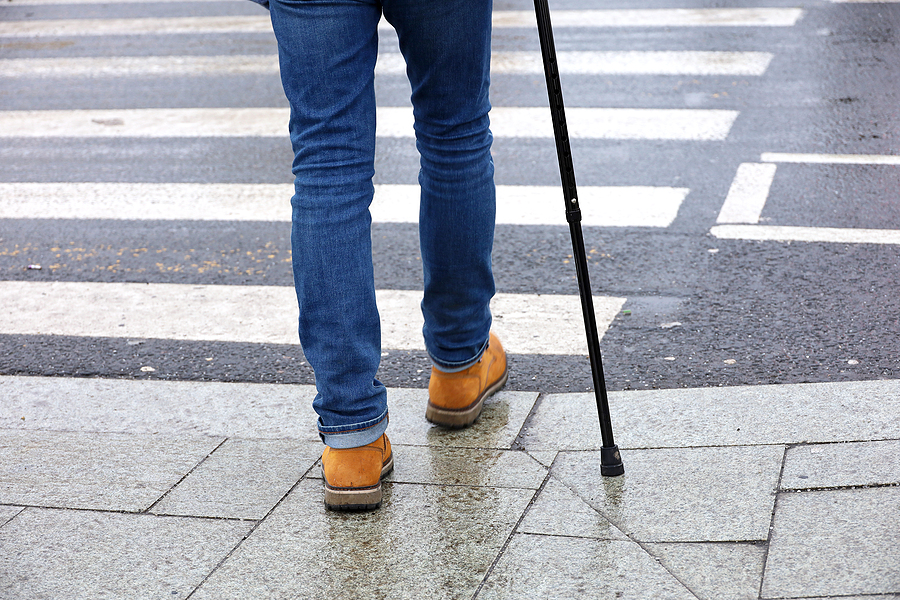
Proper Cane Height and How to Use a Cane
A cane may be recommended by a doctor or physical therapist to support balance and stability. Coordination issues, balance difficulties, and muscle weakness may develop due to injuries, a disability, degenerative diseases, or surgical procedures. When minor assistance is needed to move around, a cane may offer sufficient help.
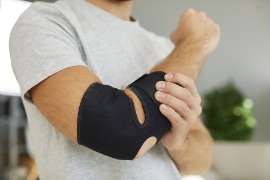
Use of Braces for Injuries, Sports, and Activities
Joint and back pain are common problems that may develop due to deep tissue injuries and certain types of sports (e.g., basketball, baseball, tennis, and gaming), age-related changes, motor vehicle and work-related accidents.

Understanding Benign Paroxysmal Positional Vertigo (BPPV)
Benign Paroxysmal Positional Vertigo (BPPV) is an inner ear disorder that is usually localized to one ear and develops when tiny calcium crystal-based structures called otoconia become dislodged and move freely in the fluid-filled region of the inner ear. The crystals may gradually drift into various areas, including semicircular canals that are responsible for sensing head movements.
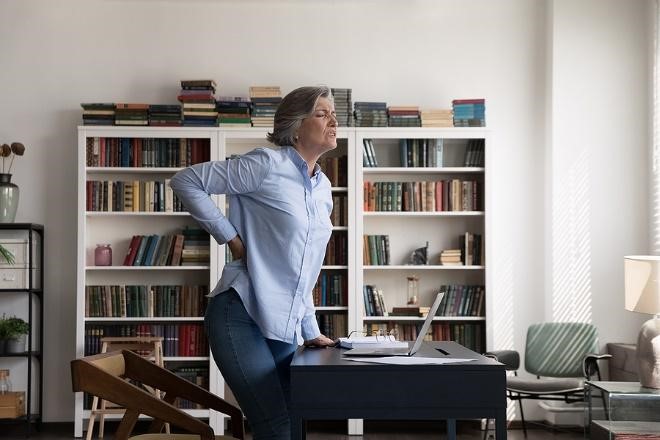
Acute vs. Chronic Back Pain
Acute back pain lasts for less than chronic back pain — a healthcare professional will typically diagnose ongoing pain as chronic at around six months. Both acute and chronic back pain may be dull, moderate, or severe, and sometimes minor acute pain can become chronic if it is not addressed quickly.

Managing Neck Pain and Stiffness
Neck pain is a common musculoskeletal issue that is associated with increasingly high healthcare costs and job absences each year.
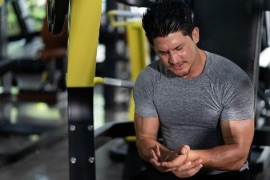
What Are Repetitive Strain Injuries?
A repetitive strain injury develops when tendons, muscles, ligaments, or nerves in a joint become irritated due to repetitive activities. This injury is also known as non-specific upper limb pain or work-related upper limb disorder. Other conditions such as carpal tunnel syndrome, tendonitis, tennis elbow (lateral epicondylitis), Guyon canal syndrome, and cubital tunnel syndrome are referred to as repetitive strain injuries.
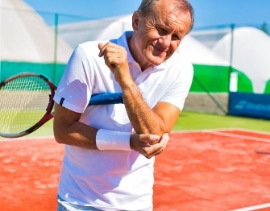
Understanding Tennis Elbow
Tennis elbow—or lateral epicondylitis—is a painful condition that develops due to repetitive motions such as swinging a tennis racket. It is an overuse injury that occurs when tendons or muscles in the forearm that extend toward the elbow become overworked. As the elbow is basically located in the middle of the upper extremity, it is feasible that weak muscles involving the shoulder and wrist can also impact as causal factors for tennis elbow. When these muscles are weak the body nat...

Chronic Pain from Muscle Imbalance
A muscle imbalance occurs when the structure of connective tissue or muscles changes in a manner that causes joint misalignment. This type of imbalance can lead to joint strain and subsequently put too much pressure (compression) on the nerves in the affected region. When this happens, chronic pain may develop. If the body attempts to lessen the pain through readjustment, additional muscles, ligaments, tendons, or connective tissue may become imbalanced—eventually making the pain even wors...

Understanding Shin Splints
Shin splints, known medically as medial tibial stress syndrome develop due to repeated stress on bones, muscles, and tendons in the lower legs that hinder the body’s ability to heal properly. A shin splint typically causes pain on the inner side of the lower leg where the tibia or shin bone connects to muscles that provide support. However, the pain is the result of inflammation that has accumulated over time. This type of injury is common in athletes such as runners, basketball players, a...
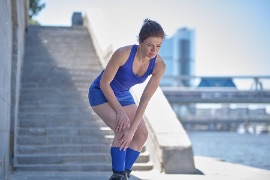
Running injuries
Running is an optimal form of exercise that engages your entire body. However, people who run on a regular basis or for certain sports are prone to running injuries. Incorporating prevention strategies into your running routine is a good way to avoid injuries, but there are also a number of beneficial approaches for injuries you may not be able to avoid.

Understanding Long-Haul COVID-19
For most people, COVID-19 symptoms last two weeks, but long-haul COVID-19 patients experience symptoms for more than four weeks. Some patients experience symptoms for longer than 12 weeks, and even beyond 6 months. Long-haul COVID-19 patients test negative during screening as there is no live virus.
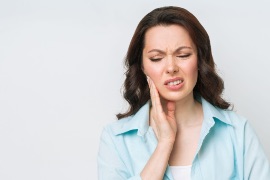
TMJ Pain and dysfunction
Have you ever woken up from a deep sleep and rubbed the area right in front of your ear because it’s sore? If so, you’ve experienced at least a mild version of TMJ dysfunction. The TMJ can be a very painful area and create a hassle over time. If left untreated, it affects your sleeping, eating and posture. Here, we’ll discuss TMJ dysfunction and what you can do about it.
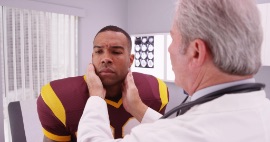
Dynamic Neck Strengthening as Concussion Prevention
Concussions in sports are common— as many as 3.8 million per year occur in the U.S. In recent years, parents have reconsidered entering their child into contact sports to protect them from these often-recurring injuries. Highly publicized lawsuits against professional sports organizations have led to an increase in concussion prevention research, and the results may surprise you. While updating certain rules in sports have helped somewhat with concussion prevention, strengthening the muscl...

Get going with a healthy diet
A healthy diet not only helps keep the waistline trim, it also gives you inner energy to help get you moving. Fuel your body with healthy foods to sleep better, reduce your risk of disease, and feel that get-up-and-go you’ve been searching for! For people seeking weight loss, a healthy diet and exercise are almost always the first prescriptions. When people hear this, some will justify unhealthy eating choices by adding in extra exercise.

Tips for managing sports injuries
Sports injuries are common amongst both youth and adults. While they may not be completely preventable, there are ways to reduce the chances of acquiring an injury, such as training in body awareness and improving muscle tone. Managing these injuries requires a combination of both protecting the injured body part and optimizing healing.

Vision training for sports
Vision training for sports is a research-based technique designed to help improve balance, eye-hand coordination, timing, positional, peripheral, and spatial awareness, depth perception, and reaction speed. More than 80% of sensory input is visual, which means the eyes play an important role in athletic performance, but this aspect of training is often overlooked. Accordingly, research shows that dynamic vision training which involves a concerted regimen for the eyes helps athletes and sports en...

Concussion Management
A concussion is a mild traumatic brain injury (TBI) that happens when a blow to the head or body alters brain function. Concussions are among the most common injuries to affect Americans, with almost half experiencing at least one during their lifetime. In fact, they affect up to four million Americans per year, and primarily occur from falls in the young and elderly.

Understanding Tension Headaches
There are three common types of headaches: tension, migraine, and cluster headaches.
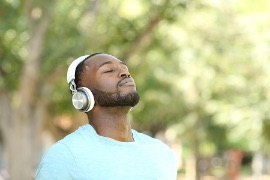
How often do you think about your breathing?
It’s something we do thousands of times a day without even thinking about it. Otherwise known as ventilation, the process of breathing seems straightforward.

What is the difference between Chronic Pain and Daily Pain?
Pain is something we may experience every day in one form or another.
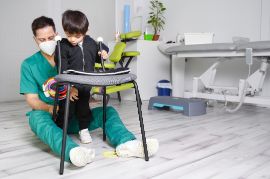
Why Your Child Might Need a Physical therapist
From sports injuries to congenital deformities, children can have issues that result in dysfunctional movement or pain with activity.

Physical Activity vs Exercise
We all know that moving our bodies and burning calories is good for us. From cardiovascular benefits, to decreasing the chances of becoming diabetic or obese, to even reducing stress and improving our microbiome and gut, movement is vital to our all-around health.
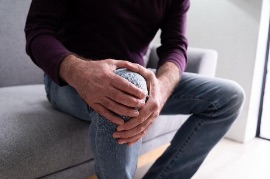
Understanding Joint Stiffness
Joint stiffness can be a major deterrent to staying active. Contrary to what you might think, however, stiff joints and muscles may become worse with rest and better with movement. Yes, exercise can actually help achy, arthritic joints feel better. Research shows that the cellular properties of muscles and joints respond well to simple stretching, strengthening, and coordination exercises to maintain and promote joint health.

Keeping Kids Active
Maintaining a healthy lifestyle in the age of Covid-19 has been difficult for both adults and children. Kids today face a whole new set of challenges compared to any other recent generation. On top of a rapidly evolving world of technology, which enables almost infinite entertainment possibilities at their fingertips, many kids now attend school virtually.
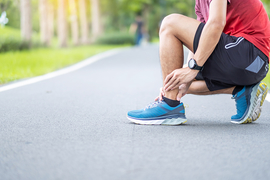
Balance Training Combats Ankle Sprains
Ankle sprains are common among active individuals, especially athletes who play sports such as basketball or soccer. However, jogging, running, cheerleading, and gymnastics are linked to ankle sprains as well.

The BEST posture is the NEXT posture
When most people hear the word 'posture', they immediately think about the position their bodies are in when they are in a seated position, but it involves so much more than that. Posture is also the way an individual moves their body. Posture is dynamic because the body is built for fluid movement and is not meant to remain in static positions for extended periods of time.

Intramuscular Stimulation for Neuropathic Pain
IMS is a common therapeutic approach that provides relief for individuals suffering from persistent nerve pain. Read on to learn more about the benefits of combining physiotherapy exercises with IMS.
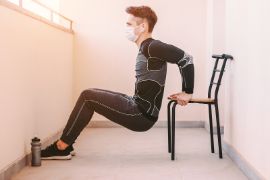

Neurocognitive Training can boost Mental Performance
Neurocognitive training is a useful brain-stimulating activity that involves being actively engaged in tasks that challenge the brain. Computer-based tasks, creative writing, dance, theater, or music-related activities, and even learning new tasks such as digital photography, quilting, or crafting can afford seniors with numerous benefits.
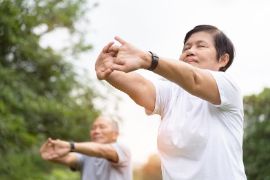
Living a full, active life with arthritis
Many people experience the aches and pains of arthritis, especially as they age. In fact, arthritis is the most common chronic condition in people over age 65 in North America. While once thought of as a death sentence for an active lifestyle, we now know that maintaining and even progressing physical activity can help with arthritis symptoms.

Balance Issues in Seniors and Fall Prevention
Falls are among the leading causes of serious injury (e.g., fractures) and death for seniors in the United States. There are a number of factors that play a role in an individual's ability to maintain good balance, such as ear and visual health, core muscle strength, and nervous system function, among other factors.

How Pelvic Floor may contribute to Hip or Back Pain
Low back pain is a common occurrence for a large number of adults and sometimes it’s accompanied by hip pain. There are several underlying causes of persistent pain in these areas and in a number of cases issues related to the pelvic floor are overlooked.
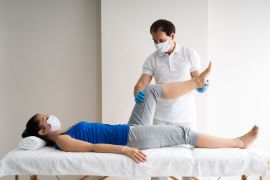
Physical therapy Training
Clients are often curious what training Physical therapists go through in our journey to become equipped to help people address pain and mobility issues that are the result of traumatic injuries, chronic conditions, and surgeries.
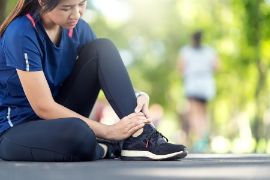
Preventing and Treating Running Injuries
Running is a major component of many sports, and a favorite recreational activity for many. When executed properly, running provides enjoyment and boosts overall health, but there are a variety of reasons why running injuries can occur.
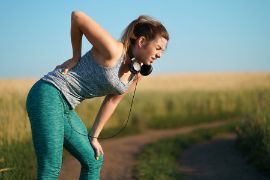
Staying Active with Back Pain
A serious back injury, major back surgery, or experiencing occasional back pain can all disrupt your normal routine and lead you to become less active. If the pain starts to become unbearable, it may be tempting to take pain relievers and just rest in bed, but it is actually important to continue moving in a safe manner in order to promote healing.

Getting Ready for Gardening
For many people, gardening is a pleasurable activity that reaps beautiful blossoms and sometimes a bountiful harvest of fruits and vegetables. Individuals can enjoy gardening for hours as long as they take safety precautions and pay close attention to using good posture.
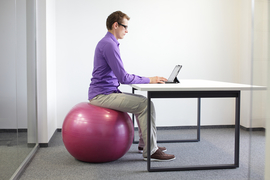
Staying healthy in the age of social distancing
Nearly all of us are isolating at home for the good of society. How can we stay physically and mentally healthy during this challenging time?
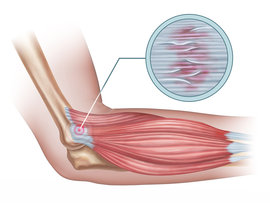
Managing Tennis Elbow
Tennis elbow, which is also known as lateral epicondylitis/epicondylalgia, is a painful condition that develops when the muscles and tendons that extend from the forearm to the outer portion of the elbow, called the lateral epicondyle, become injured or overworked.

Understanding Repetitive Strain Injuries
A repetitive strain injury refers to recurring pain affecting the nerves, muscles, or tendons of a joint due to tissue damage that is caused by repetitive movements. In the arms, this particular type of injury is also called work-related upper limb disorder or non-specific upper limb pain. Joints that are most commonly affected by repetitive actions include: the wrists, hands, elbows, forearms, shoulders, and neck.
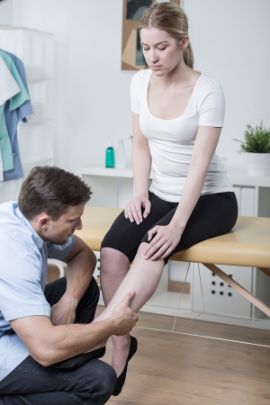
Preventing Shin Splints
A shin splint, which is also known as tibial stress syndrome, refers to a painful shin injury that may occur due to overexerted muscles in the lower legs, having flat feet, an increased body mass index (BMI), or a stress fracture.
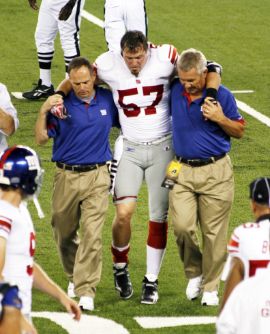
Managing Sports-Related Injuries
Sports-related injuries can occur during indoor and outdoor sports, as well as while training or regularly exercising. These types of injuries may be the result of improper training techniques, overtraining, the misuse of equipment or protective devices, an inadequate warm-up, poorly performed stretching exercises, or an unforeseen accident. The most common sports-related injuries include: strains, sprains, dislocations, and fractures. The feet, ankles, shoulders, hips, and knees are most freque...

Exercise during Flight
Flying is a common way to travel, and most people may see it as an opportunity to relax and rest during the trip. However, it is important to remain relatively active while on a plane.

Understanding Muscle Spasms
A muscle spasm refers to a sudden, sharp, and involuntary muscle contraction. The painful spasm that develops is due to the muscle remaining in a contracted position. One of the most common types of muscle spasms occur in the calf muscles, which is often called a Charley Horse. They may also develop in the hand muscles, especially in musicians. Spasms may even arise in muscles within the spine or internal organs such as the bladder or colon.

Spinal Compression Fractures
The bones or vertebrae in the spine are very strong, but sometimes, in certain circumstances such as excessive pressure, repetitive bending or lifting or a physical injury such as a hard fall can damage or weaken vertebrae. When a spinal bone collapses, this is referred to as a compression fracture. For young, healthy individuals these fractures are rare but most likely to occur in those who work at heights or participate in sports like gymnastics, or aerial sports like ski jumping which involv...

Common Cycling Injuries
Cycling is an activity that many people enjoy. Some individuals are more experienced than others, but cyclists of any level may experience injuries. Certain injuries can be avoided and some can be treated at home, while other more serious issues may require a visit to a physical therapist.

What is Elastic Tape and How Does It Work?
While taping as a therapeutic technique has been used since around the 1800’s, elastic taping, such as Kinesiotape (KT) and Rock Tape, have recently become quite popular in the rehabilitation industry. It is commonly used to treat or prevent muscle and joint related injuries such as sprains and strains, as well as tendinitis.

Risks of overtraining
Training for sports is a balance between overload and recovery. If the physical stress placed on an athlete is greater than what they can handle, imbalances can occur, leading to “nonfunctional overreaching”, defined as overtraining syndrome (OTS). Without adequate recovery, overtraining can result in injury and/or a decrease in athletic performance.
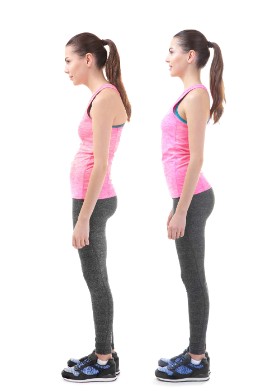
The benefits of good posture
Posture refers to the way you hold your body when sitting, standing, laying, and walking. Good posture helps prevent excessive strain on the joints and muscles of your body, which helps to reduce pain and minimize your risk of injury. Good posture can even boost your self- esteem and mood. While it takes time and effort to train your body to maintain good posture, the health benefits are definitely worth it!

Keeping My Shoulders Healthy As I Age
Musculoskeletal disorders are commonly experienced by older adults and are directly related to a decline in general health and a reduced quality of life, with the shoulder joint commonly being affected. Studies have revealed
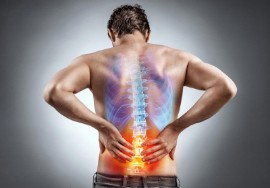
Acute Versus Chronic Back Pain - What’s the difference?
Back pain is one of the most common causes of missed days from work and job-related disabilities. The occurrence of back pain is fairly equal for both men and women, and can have a wide ranges of causes. Back pain is generally reported as originating in the lower back, with an intensity that may range from a dull ache to a sharp, intense sensation, and it may be acute (short-term) or chronic (long-lasting). In the majority of cases, back pain is acute, but certain spinal conditions or injuries m...


Concussions
Concussions have been recognized as a clinical condition for more than 1,000 years, and during the 20th century concussion was studied extensively in boxers. However, interest in concussion didn’t peak in the general population until 2002 when it was determined that repetitive concussion could lead to chronic brain damage, and potentially to progressive neurologic disorders, including punch drunk syndrome, traumatic encephalopathy, chronic traumatic encephalopathy (CTE), dementia pugilisti...

Labral Tears
The labrum is an important cartilage ring that promotes stability and shock absorption in the shoulders and hips. It is attached to the outer rim of the shoulder socket and helps keep the ball of the shoulder in place. The labrum performs that same function in the hip socket. When it gets torn the damage is referred to as a labral tear. In some cases, a labral tear occurs as the result of an injury, but it may also develop over time due to the aging process. In addition, labral tears are often h...

Rotator Cuff Tears
Shoulder pain is a leading musculoskeletal complaint seen in primary care provider offices, with rotator cuff injuries accounting for 64% of shoulder-related visits.

ACL Injuries
Injury to the anterior cruciate ligament (ACL) of the knee is one of the most common and devastating injuries that commonly affects athletes that participate in demanding sports, such as soccer, football and basketball. ACL tears are responsible for approximately 64% of knee injuries in athletes that participate in pivoting and cutting sports, resulting in up to 200,000 ACL reconstructions each year.
